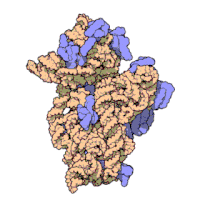
Photo from wikipedia
This study aimed to analyze the bacterial diversity in carwash effluents and to determine their potential for use in microbial degradation of environmental contaminants. Nine carwash effluent samples were collected… Click to show full abstract
This study aimed to analyze the bacterial diversity in carwash effluents and to determine their potential for use in microbial degradation of environmental contaminants. Nine carwash effluent samples were collected for physicochemical and bacterial community diversity analysis using multi-digital probes and 16S rRNA gene amplicon sequencing respectively. The pH of all effluent samples was neutral to slightly alkaline. Oil and grease concentrations ranged from 15.3 to 49.7 mg/L. 16S gene amplicon sequencing of the nine samples produced 45,934-sequence reads, which translated to 13 bacterial phyla, 26 classes, and 43 genera. The most dominant phyla were Proteobacteria, Bacteroidetes, Firmicutes, and Fusobacteria. Canonical correspondence analysis (CCA) showed that the distribution of the phyla Proteobacteria, Bacteroidetes, Acidobacteria, and Verrucomicrobia was influenced by the presence of oil and grease, total petroleum hydrocarbons-gasoline range organics (GRO-TPH), and metals species (Pb, Cu, and Zn). The dominant bacterial genera found in the present study were previously proven to biodegrade hydrocarbons, and their presence in carwash effluents could bode well for in situ natural bioremediation of these contaminated sites.
Journal Title: International Microbiology
Year Published: 2019
Link to full text (if available)
Share on Social Media: Sign Up to like & get
recommendations!